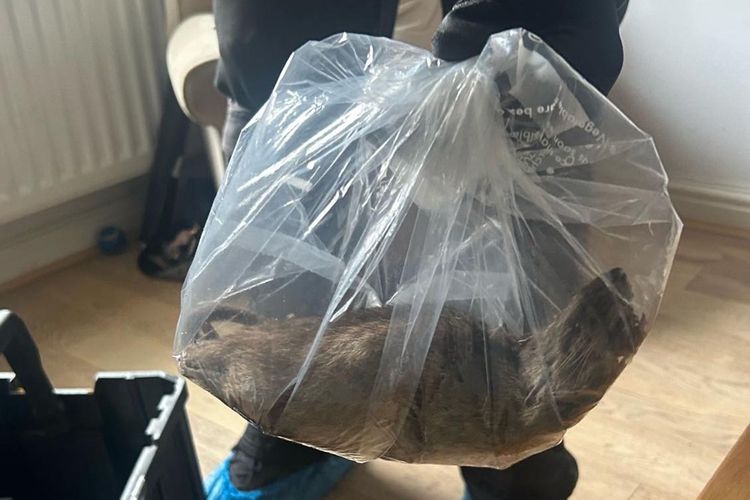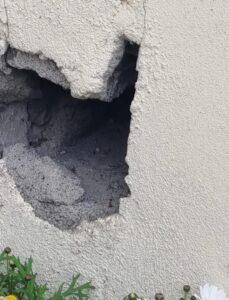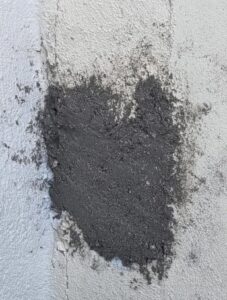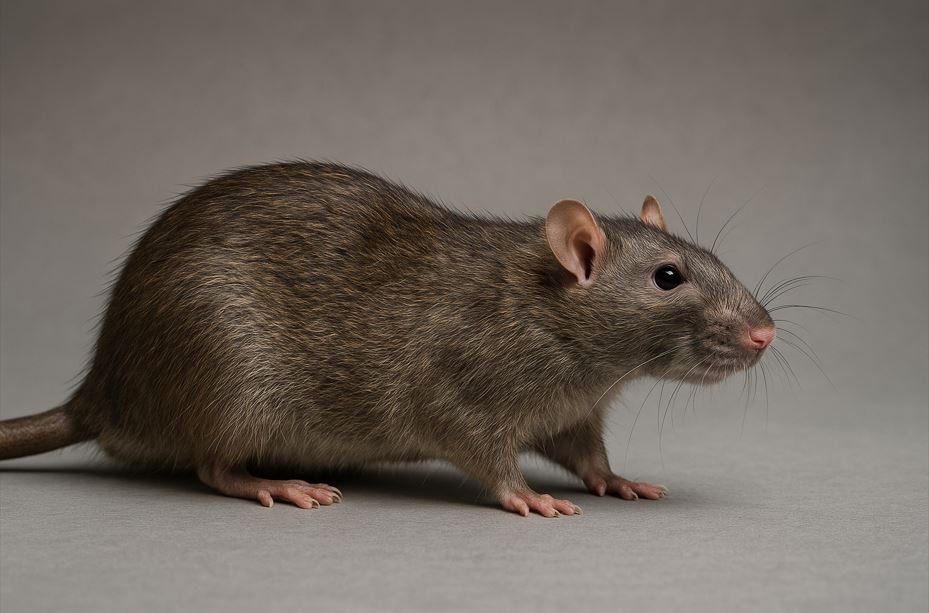Dublin’s Super Rat Problem: What Every Homeowner Needs to Know
How to Stop Super Rats
You’ve probably read a recent headline in the British media: “Super rats the size of cats terrorise UK homes.”
These aren’t sensational stories, they’re real reports and evidence of rat measuring over 22 inches long, emerging up through toilets and frightening homeowners
But what this article didn’t cover is that Dublin is experiencing the exact same problem.
And we should know because at House and Home Pest Control, we’ve been tracking this trend for months and seeing it in our own call outs to properties and businesses.

Credit Eston Ward Councilors David Taylor and Stephen Martin
Dublin saw a 41% rise in reports of rat infestations during 2024, with our own call-outs mirroring national trends.
Across Ireland, Rentokil recorded a 2.6% increase in rat-related callouts in September 2024 compared to September 2023, with homeowners across Dublin, Meath, and Louth reporting encounters with unusually large, aggressive rats. Source Rentokil
This isn’t just another pest problem, it’s a big shift in how rats are adapting and getting better at surviving in cities like Dublin
Meet the Pest Control Expert: James McGuinness, Dublin’s Leading Pest Control Authority
 James McGuinness is the founder and lead technician at House and Home Pest Control, with over 15 years of experience managing pest infestations across Dublin, Meath, and Louth. James holds certifications from. His company has successfully treated over 3,000 properties across Dublin and is an approved contractor for commercial pest control services.
James McGuinness is the founder and lead technician at House and Home Pest Control, with over 15 years of experience managing pest infestations across Dublin, Meath, and Louth. James holds certifications from. His company has successfully treated over 3,000 properties across Dublin and is an approved contractor for commercial pest control services.
The term “super rat” isn’t a scientific exaggeration – it’s a precise description of what we’re dealing with. These rats exhibit three key characteristics that separate them from their predecessors:
Size: Traditional Dublin rats can measure 12 inches, including their tail. The new generation regularly exceeds 20 inches, with some specimens reaching nearly two feet in length.
Intelligence and awareness: These rats demonstrate problem-solving skills that can even surprise the pest control professionals. They’ve learned to navigate complex drainage systems and even work together to access food sources.
The Dublin Connection: Why We’re Seeing This Trend
The numbers tell a stark story: Dublin health authorities recorded between 16,000-17,000 callouts annually for rat infestations across Dublin city and county.
“What we’re seeing in Dublin mirrors the UK trend exactly,” McGuinness notes. “The Independent’s reports about rats getting bigger aren’t exaggeration we’re seen similar sizes here.
What is the Scale of Ireland’s Rat Problem
The statistics are sobering. A government scientist recently estimated Ireland’s rat population at 10.5 million, roughly two rats for every person in the country. These rats collectively consume approximately 210 tonnes of food daily while contaminating far more through droppings, urine, and hair.
In the UK, which provides a glimpse into Ireland’s future, councils tackled 743 rodent infestations daily during 2023, a figure that represents a 20% increase from 2022’s already elevated numbers. Source: Direct Line Group
What are Dublin’s Unique Challenges
Dublin’s Victorian-era drainage system wasn’t designed for modern waste volumes. Combine century-old sewers with takeaway culture, and you’ve created underground highways that rats get around easily. We regularly find rats using these systems to travel between buildings, sometimes covering distances of several kilometers underground.
Warmer Winters
Ireland’s increasingly mild winters mean rats no longer face the natural population control that cold weather once provided. Warmer temperatures lengthen breeding seasons and allows larger populations to survive through the winter months.
How do Super Rats Infiltrate Dublin Homes
The methods these rats use to enter homes would shock many Dubliners. Based on our field experience, here are the most common infiltration routes:
The Toilet Route
This sounds unreal, but it’s one our most frequent call-outs.
Rats are really good swimmers and climbers. Dublin’s interconnected drainage system allows them to travel from street sewers directly into residential plumbing.
Case Study: Last month, we received a distressed call from a family in Swords. A rat had emerged from their upstairs toilet at 2 AM, ran across the bathroom floor, and disappeared under the bath. Investigation revealed the rats were using a hole in the wall to enter in between houses a highway between houses, and then enter into the drainage system
Under-Floor Networks
Georgian and Victorian Dublin homes often have accessible under-floor spaces that rats exploit. They create extensive tunnel networks beneath floorboards, emerging through gaps around pipes or under skirting boards.
Attic Invasions

Rats are very good climbers. They access roofs via overhanging trees, drain pipes, or cable installations, then find entry points through damaged roof tiles or ventilation gaps.
The Shared Wall Problem
Dublin’s terraced housing means one household’s rat problem quickly becomes a street-wide issue. Rats easily travel through cavity walls, emerging in neighboring properties days or weeks later.
What are The Health Implications Dublin Residents Can’t Ignore
Super rats aren’t just a nuisance, they represent a genuine health threat that’s escalating with their increasing size and population density.
Disease Transmission
Larger rats carry proportionally larger pathogen loads. Diseases like Weil’s disease (leptospirosis), salmonella, and hantavirus become more dangerous when transmitted by super rats due to higher bacterial concentrations.
Structural Damage
A 12 to 20 inch rat can cause significantly more property damage than smaller ones. They can chew through thicker cables, create larger holes in walls, and can even damage structural timbers in older Dublin properties.
What are the Prevention Strategies That Actually Work to Stop Super Rats
Based on hundreds of successful treatments Ithat House and Home Pest Control have carried out across Dublin, here are the strategies that actually work in stopping super rats from getting into your home
The Foundation Defense
Seal Every Entry Point: Rats can squeeze through gaps smaller than a 50-cent coin, thanks in no small part to their having a cylindrical body and no collar bones. You need to use professional-grade steel wool, expandable foam, and metal mesh to block their access routes.
Below is a hole in a wall that we sealed where rats were gaining access to a property.


Drain Protection: Install rat blockers in external drains and ensure all drain covers are secure and undamaged.
Structural Repairs: Fix cracked mortar, damaged roof tiles, and gaps around utility penetrations.
Food Source Elimination
Waste Control: Use Strong metal bins with tight-fitting lids. Clean bins regularly with disinfectant, and never leave bags beside bins overnight.
Pet Food Storage: Store dry pet food in metal containers with secure lids. Clean pet feeding areas immediately after use.
Garden Maintenance: Remove fallen fruit, secure compost bins, and eliminate standing water sources.
When to Call Professional Pest Control Dublin Services
Many Dublin homeowners delay professional intervention, hoping DIY solutions will be enough. Our experience suggests this approach often worsens the problem. Contact professionals immediately if you notice:
Physical Evidence: Fresh droppings (super rat droppings are notably larger than normal), gnaw marks on food packaging, or grease stains along walls where rats travel.
Auditory Signs: Scratching, scurrying, or squeaking sounds, particularly at night. Super rats are often bolder and noisier than smaller species.
Structural Damage: Chewed electrical cables, holes in walls or floors, or damage to insulation or stored materials.
Sightings: Any rat sighting during daylight hours suggests a large, confident population. Super rats are particularly brazen and may appear during daylight.
Unusual Pet Behavior: Dogs and cats often detect rats before humans do. Persistent attention to walls, floors, or specific areas may indicate rat activity.
Conclusion: Your Next Steps
Super rats in Dublin aren’t coming, they’re already here.
If you are unlucky enough to have them infest your home, the most effective blocking strategy combines immediate professional assessment with long-term prevention tips.
Waiting until you see rats in your kitchen means you’re already dealing with an established population that’s much more difficult and expensive to eliminate.
Take Action Today: Contact House and Home Pest Control for a comprehensive property assessment.
Our experienced team understands Dublin’s unique pest challenges and has successfully managed super rat infestations across the city.
Read our reviews here of customers we have dealt with around rat and pest issue
📞 Call us on or visit houseandhomepestcontrol.ie to schedule your inspection.
Remember: in the battle against super rats, early action isn’t just advisable, it’s vital.
House and Home Pest Control provides professional pest control Dublin services across Dublin, Meath, and Louth. Our experienced team uses the latest techniques and technology to protect your property from super rats and other urban pests.
Frequently Asked Questions
Q: How big do super rats actually get in Dublin? A: We regularly encounter rats measuring from 8 – 10 inches from nose to tail tip.
Q: Are super rats more dangerous than regular rats? A: Yes, larger rats carry higher pathogen loads and cause more structural damage. They’re also more aggressive when cornered and can inflict more serious bites.
Q: Can super rats really climb up through toilets? A: Absolutely. This is one of our most common call-out scenarios in Dublin. Rats are excellent swimmers and can navigate drainage systems to emerge in bathrooms.
Q: How quickly can a super rat infestation develop? A: Under ideal conditions, a pair of rats can produce 200+ offspring annually. Dublin’s milder winters and warmer summers and abundant food sources accelerate this process significantly.
Q: What’s the most effective way to prevent super rats? A: Comprehensive exclusion (sealing entry points), food source elimination, and regular professional monitoring are the most effective prevention strategies.
Q: Should Dublin residents be concerned about super rats? A: Yes. The trend is accelerating, and early prevention is far more effective than reactive treatment after an infestation is established.

